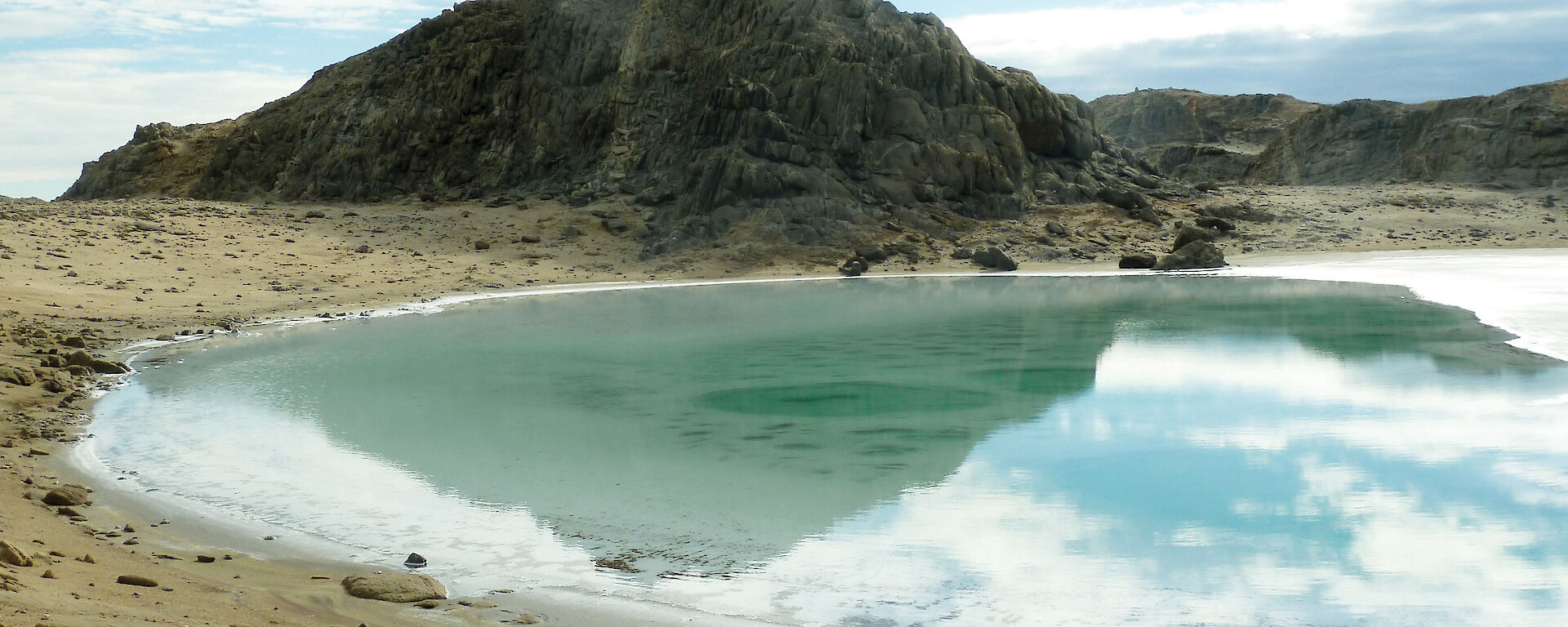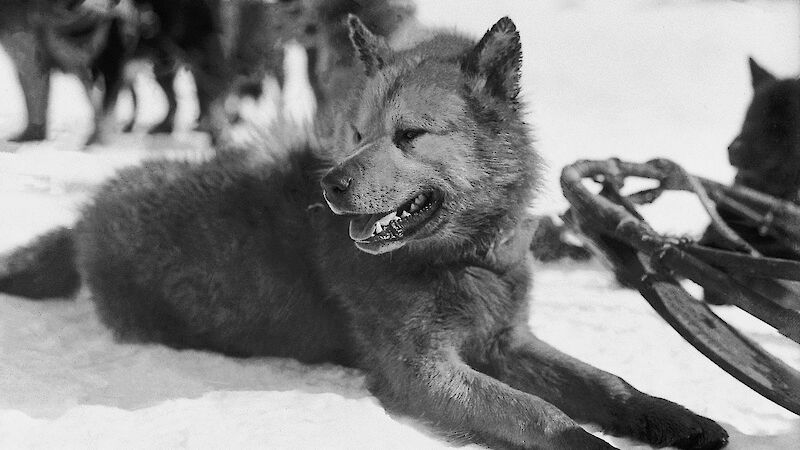The Australian Antarctic Division Place Names Committee has named 26 islands, rocks and reefs after the beloved dogs, which played a critical role in Douglas Mawson’s Australasian Antarctic Expedition (AAE) from 1911 to 1914.
Committee Chair, Ms Gillian Slocum, said the most prominent features were named after the most important dogs.
“Lassesen Island, in the Mackellar Islands, is named after Norwegian explorer Roald Amundsen’s favourite husky,” Ms Slocum said.
“The dog was part of Amundsen’s party when he became the first person to reach the South Pole in 1911. Unfortunately Lassesen died on the return journey, but Amundsen gave Mawson another dog with the same name.”
The smaller Pavlova Island recalls the husky Pavlova, named after famed Russian dancer Anna Pavlova, who was a friend of AAE member Belgrave Ninnis and greatly interested in the AAE. Ninnis cared for the huskies during the AAE, but died during Mawson’s ill-fated Far Eastern Party sledging journey, when he and six of the party’s best dogs, as well as most of the supplies, fell through a crevasse.
Other huskies named after royalty, explorers, sporting champions, singers, comedians and Greek mythology, lend their names to features such as Mary Island, Caruso Rock, Jeffries Rock and Franklin Reef.
Five features within areas of scientific importance in the Australian Antarctic Territory have also received new names. Cavities Lake and Malleefowl Hill, both in the Rauer Group, reflect the physical attributes of each feature.
“Cavities Lake is named for a series of indentations or holes in the lake floor visible through the clear, shallow water, while Malleefowl Hill is a pyramid-shaped hill reminiscent of this native Australian bird’s nest,” Ms Slocum said.
The Committee also named a glacial valley near Davis research station “Adams Flat”, after the late Dr Neil Adams, a meteorologist and Australian Antarctic Medal recipient. The name honours Dr Adams’ contribution to the development of the science of Antarctic meteorology and his work as a forecaster for the Australian Antarctic Program.
In an effort to avoid dual naming, the Place Names Committee also adopted names for 46 features previously named by the United States and New Zealand.
Place Names Committee member and cartographer, Ms Ursula Harris, said the latitude and longitude of every feature is confirmed when they are named. The approved name, the feature’s coordinates, and a narrative describing the feature, are recorded in the Australian Antarctic Gazetteer and Scientific Committee on Antarctic Research (SCAR) Composite Gazetteer of Antarctica.
“Accurate names and positions are critical for safety and science,” Ms Harris said.
“We are constantly improving our gazetteer so scientists and deep field traverse parties will be able to accurately communicate the location of their activities.”
High resolution satellite imagery has also enhanced the ability to identify features, such as distinguishing between an island and an iceberg or a close-knit group of small islands.
Ms Harris said the naming of Antarctic features is still as important today as it was when former Australian Antarctic Division Director Dr Phil Law encouraged Sir Douglas Mawson to join the first place names committee in May 1952.
The Australian Antarctic Division Place Names Committee consists of representatives from all work areas of the Australian Antarctic Division and an external member from the Department of the Environment and Energy.
Australian Antarctic place names can be searched for in the Australian Antarctic Gazetteer.
Wendy Pyper
Australian Antarctic Division



